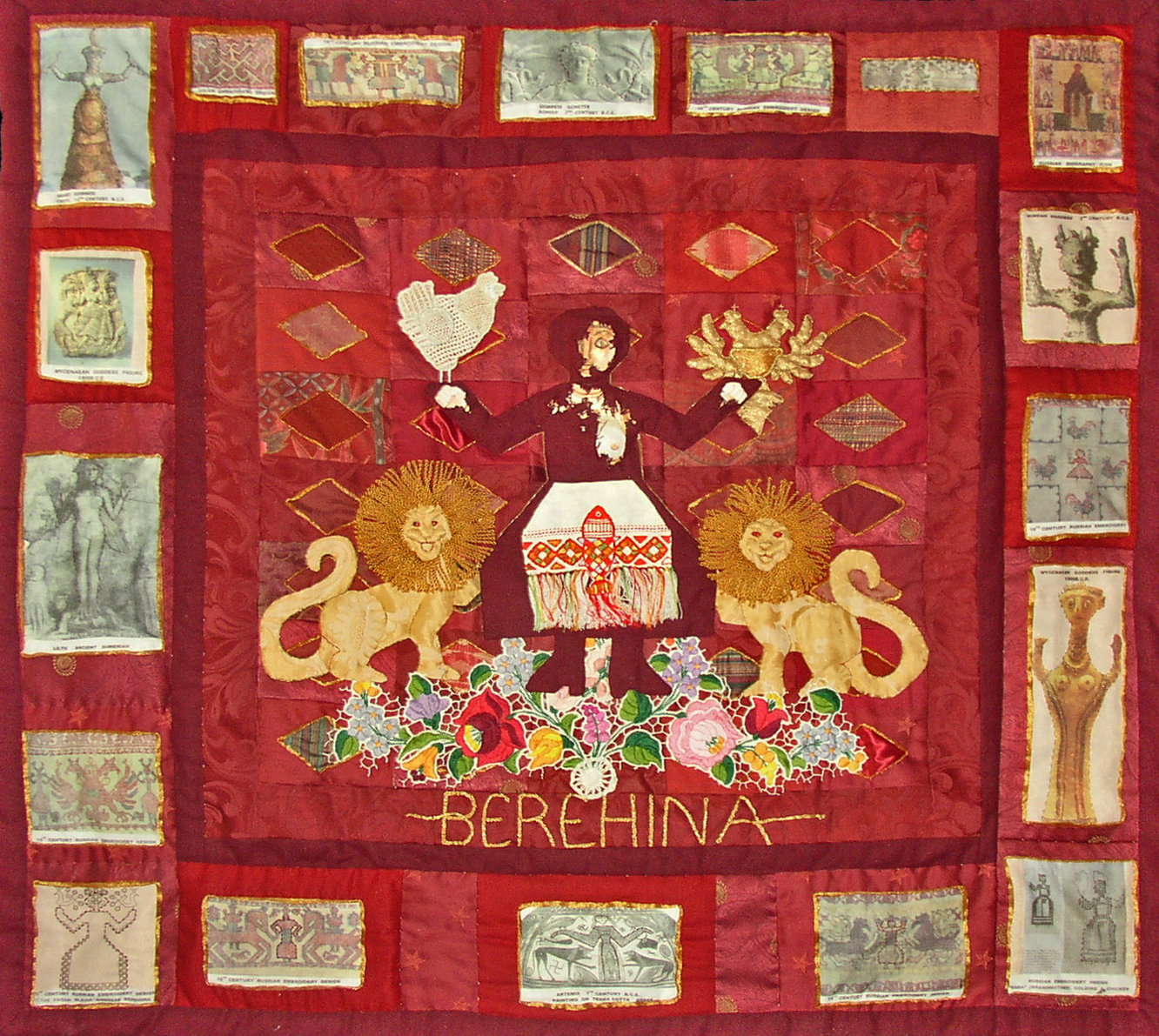In my last post, I mentioned the book Women's Work, by Elizabeth Barber. She explains how prehistoric female images evolved into embroidered patterns. How an ancient Minoan figure became Berehina, the Slavic protecter of women and fertility:
But it was in Embroidery of All Russia by Mary Gostelow that I learned how the goddess had been downgraded to 'Baba, holding a chicken"
Baba, huh? holding a chicken? OK.....
I created a ceramic version of the Minoan figure, and sewed her emerging from under the woolen figure; gave her a double-headed Russian eagle to hold in one hand and a chicken (copied from a children's coloring book) in the other. I embroidered an apron with a fish (see earlier image in this post) and used embroidered Ukrainian flowers at her feet.
But...when I showed this image at a college colloquium, I realized that the students and professors weren't familiar with any of the symbols. I struggled to figure out how I could incorporate that information, and remembered some medieval paintings of the saints...
The portrait of the saint would be in the center, surrounded by smaller paintings showing scenes from his/her life. Here, St George and the dragon. What if I used the same idea to explain the symbols in my piece? Make a..frame of reference (sorry).
Berehina (44'h x 47'w) So I printed out images of the carvings, textiles, the drawings from the books, and even (in the upper right corner) a picture of a saint with an explanatory frame. Looking back, I cringe at the lack of technical sophistication in the execution. In my next life, I'll re-do it.







